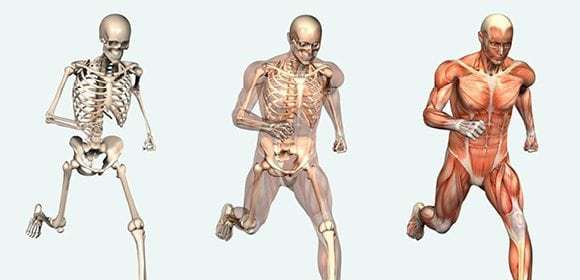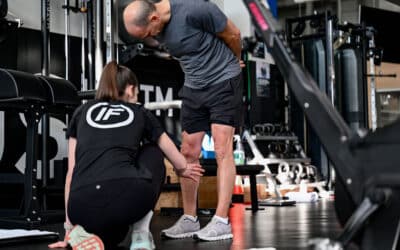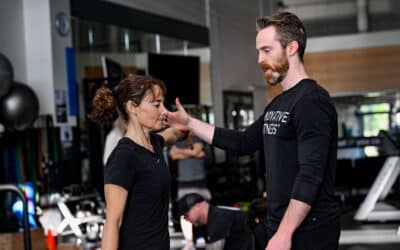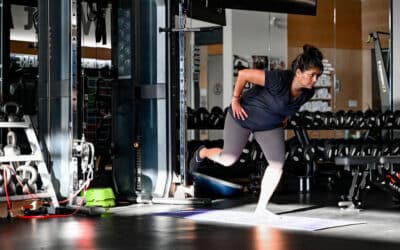
We’ve all seen it: that member who comes in for their initial workout and just isn’t moving well. We try verbal cueing; no luck. We try tactile cueing; still not quite right. We run them through our “go to” mobility drills but they still can’t physically get into the right position. What do we do next? If we can establish that it is a mobility issue, as opposed to a motor control issue, my go to modality is Fascial Stretch Therapy®. I have personally witnessed some absolutely remarkable changes using the techniques taught through the Stretch to Win institute: as one example I saw one person add 4 inches of good quality range of motion to their squat following 5 minutes of focused FST work.
How can this be accomplished? Great things happen when we stop thinking about muscles in a structural approach and instead take a global approach: looking at how the muscles line up and connect within the body and how they work in synchrony with each other. When we do this, we quickly realize that what is appearing as tightness in one muscle group could, in fact, be referred tightness coming from a different area in the body. I once knew someone who experience chronic headaches that was eventually traced back to Plantar Fasciitis as the root cause. The tension followed the superficial back line (a concept from Thomas Myers’ Anatomy Trains) from the plantar fascia all the way up to the sub-occipital region.
Aside from the biomechanical implications, Fascial Stretch Therapy® is also a great avenue for increasing your training hours in the club. Not only is it incredibly effective, it FEELS awesome and, when performed by a seasoned Fascial Stretch Therapist, it looks like a well-choreographed dance. It turns heads. Get one person on the table for an FST session during peak hours and I can almost guarantee you will have other members asking to try it out after their session has ended, or at least asking for more info about it. I have known many trainers and coaches that have literally doubled their hours by becoming known as the “Stretch Specialist” at their facility.
The key here is that this is an add-on service; it is NOT a replacement for a member’s regular training sessions. The training is what was identified as necessary for them to be ready for their next destination. FST is where we turn when things aren’t going quite the way we hoped and something extra needs to be added in. Another thing to consider is that when we create new range of motion that person does not have proper stability within it, as they have not used that end position in a long time (if ever). Stability training is absolutely necessary to help “lock-in” the benefits gained from the stretch session.
If you’re a coach who believes that movement competency is one of the most important aspects of training, I would strongly encourage you to look into this as an option for your next continuing education upgrade. You can find more info about Fascial Stretch Therapy®, as well as upcoming course dates and locations by visiting www.stretchtowin.com
As my good friend and colleague Kevin Darby always says: “You have to be mobile to move, and stable to train.”
Sean Allt
Club Manager
Innovative Fitness Vancouver
p. 604-609-5450
www.InnovativeFitness.com
Like IF – www.Facebook.com/InnovativeFitness
Follow IF – @IFDifference
Watch IF – www.YouTube.com/InnovativeFitness1






